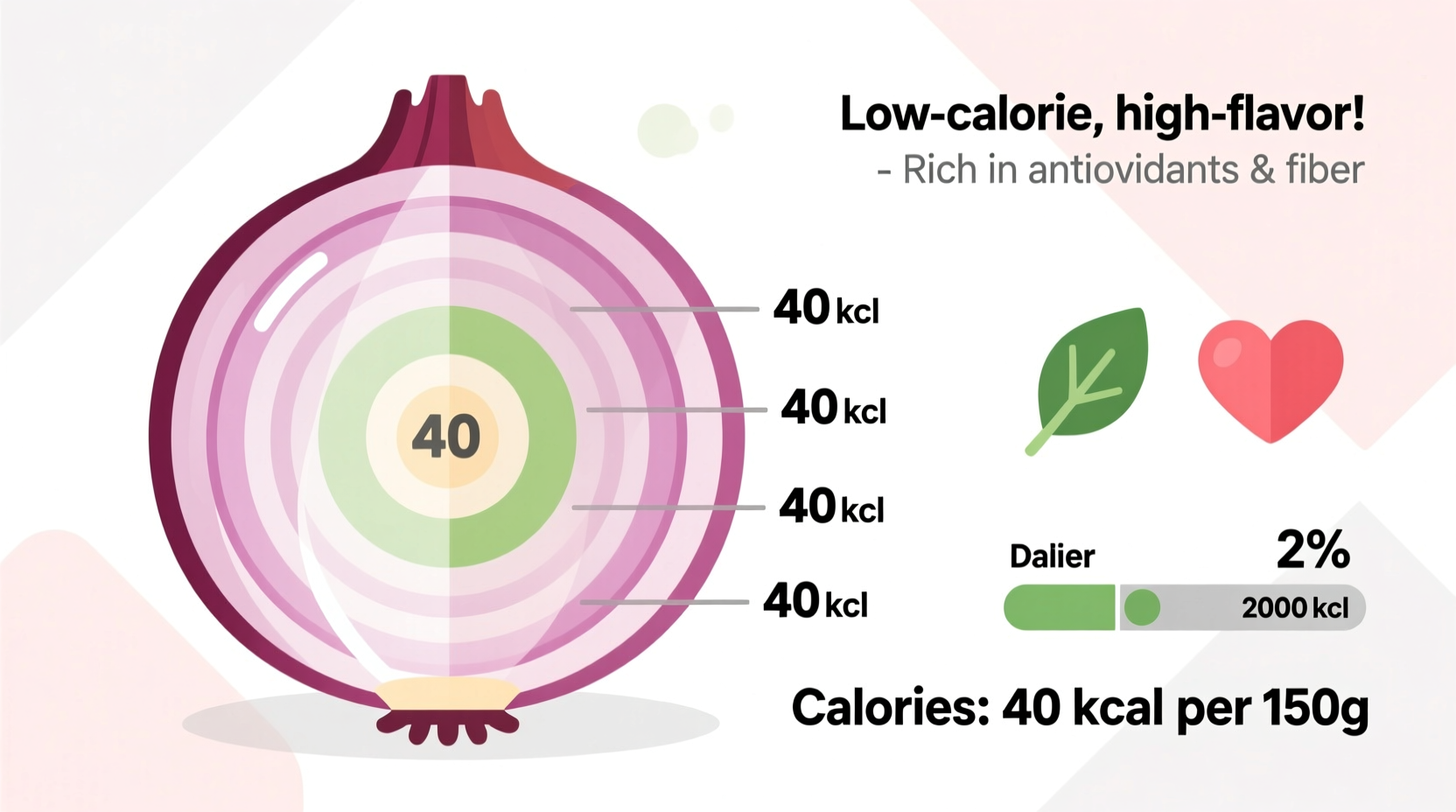Curious about onion nutrition? Whether you're tracking calories for weight management, planning a diabetic-friendly meal, or simply optimizing your diet, knowing the exact caloric value of this kitchen staple matters. Onions form the flavor foundation of countless dishes worldwide, yet many home cooks remain uncertain about their nutritional impact.
Onion Calorie Facts at a Glance
Let's cut through the confusion with verified nutritional data. According to the USDA FoodData Central database, onions deliver minimal calories with maximum flavor potential. The exact count depends on both variety and portion size:
| Onion Type | Per 100g | Medium Onion (110g) | 1 Cup Chopped |
|---|---|---|---|
| Yellow Onion | 40 calories | 44 calories | 64 calories |
| Red Onion | 40 calories | 44 calories | 64 calories |
| White Onion | 42 calories | 46 calories | 67 calories |
| Green Onions | 32 calories | 4 calories | 27 calories |
This nutritional consistency across varieties makes onions exceptionally versatile for calorie-conscious cooking. Unlike starchy vegetables, onions contribute flavor without significant caloric impact - a key reason professional chefs use them as flavor bases rather than primary ingredients.
Why Onion Calorie Counts Matter for Healthy Eating
Understanding how many calories in a onion serves multiple dietary purposes. For meal preppers tracking macros, knowing that one medium onion adds just 44 calories helps maintain precision in recipe calculations. Diabetics benefit from recognizing onions' low glycemic impact despite their natural sugars. Weight management enthusiasts appreciate how onions enhance satiety through fiber content without excessive calories.
Research published in the Journal of Nutrition and Metabolism confirms that incorporating low-calorie, high-fiber vegetables like onions helps increase meal volume while controlling total caloric intake - a technique dietitians call "calorie dilution." This explains why cuisines worldwide use onions as foundational ingredients in healthy cooking traditions from French mirepoix to Indian tadka.

Maximizing Nutritional Value in Your Cooking
When considering calories in raw onion versus cooked onion, minimal changes occur during preparation. However, cooking method significantly impacts final dish calories:
- Raw applications: Salads and salsas preserve all natural nutrients with zero added calories
- Sautéing: Adds approximately 100-120 calories per tablespoon of oil used
- Caramelizing: Concentrates natural sugars but maintains low base calorie count
- Roasting: Enhances sweetness without additional calories when oil-free
Nutritionists recommend using onions as flavor amplifiers rather than bulk ingredients. A study from Harvard T.H. Chan School of Public Health demonstrated that dishes with adequate onion content required 15-20% less added salt and fat while maintaining perceived flavor satisfaction. This makes onions particularly valuable for those following DASH or Mediterranean dietary patterns.
Practical Calorie Management Tips
For accurate how many calories in an onion for weight loss calculations, remember these professional kitchen insights:
- Peeling removes about 10% of the onion's total weight - adjust calculations accordingly
- Frozen chopped onions maintain identical calorie counts to fresh (USDA verification)
- Dried onion powder concentrates calories - 1 tablespoon equals approximately 28 calories
- Onion nutrition remains stable through multiple cooking methods with minimal nutrient loss
Registered dietitians consistently rank onions among the top 10 most versatile low-calorie ingredients for meal planning. Their combination of negligible calories, significant fiber content (1.7g per medium onion), and blood sugar-friendly carbohydrate profile makes them indispensable for balanced eating. Unlike many flavor enhancers, onions contribute measurable nutritional value including vitamin C, B vitamins, and quercetin antioxidants without caloric penalty.











 浙公网安备
33010002000092号
浙公网安备
33010002000092号 浙B2-20120091-4
浙B2-20120091-4